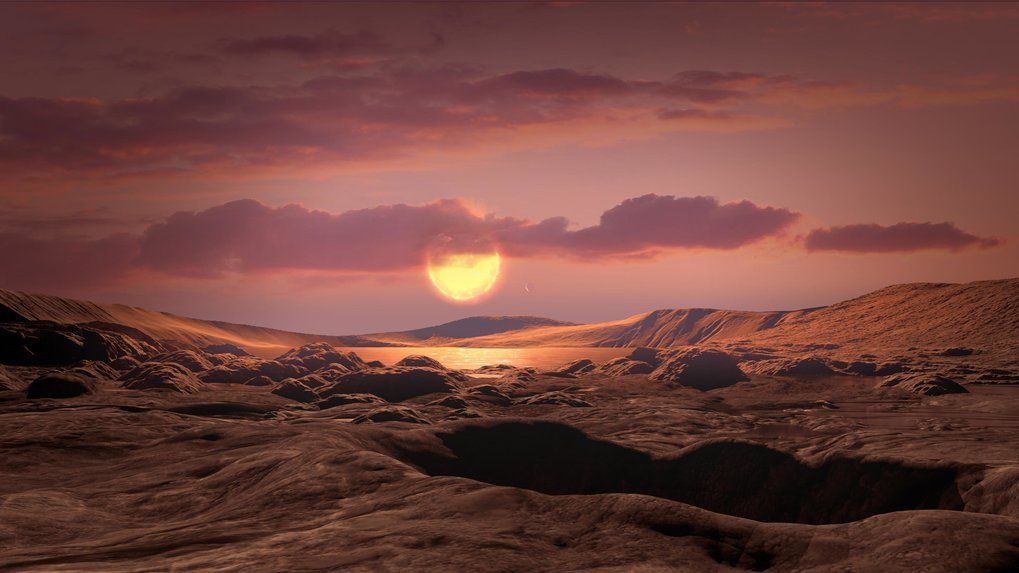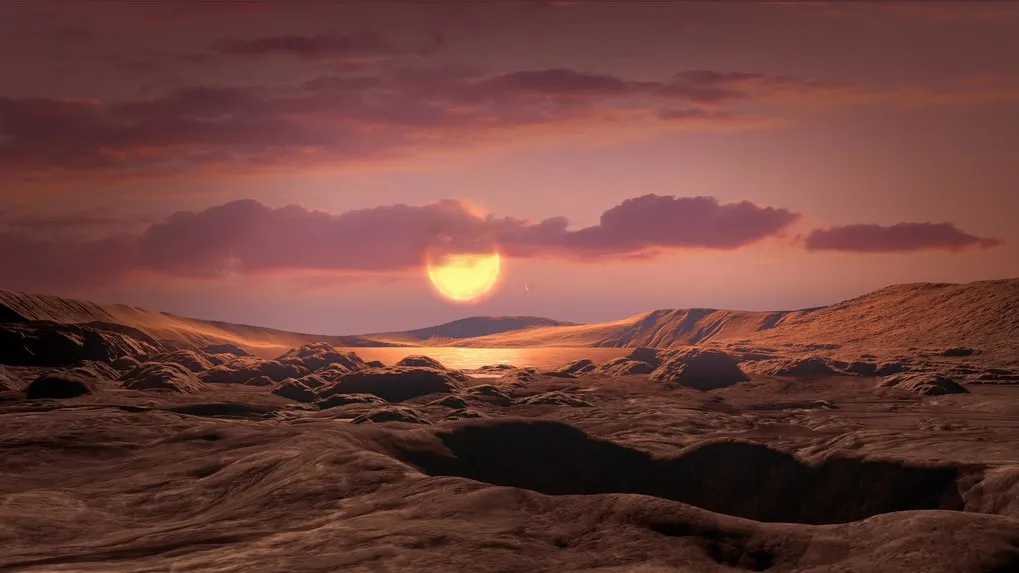Hamartia Antidote
ELITE MEMBER

- Joined
- Nov 17, 2013
- Messages
- 35,188
- Reaction score
- 30
- Country
- Location

Astronomers discover potential habitable exoplanet only 31 light-years from Earth
Is Wolf 1069 b the Earth-like exoplanet we've been looking for?
Is Wolf 1069 b the Earth-like exoplanet we've been looking for?

An artist's depiction of Wolf 1069 b. (Image credit: NASA/Ames Research Center/Daniel Rutter)
Although astronomers have discovered more than 5,200 exoplanets, less than 200 are rocky — so the discovery of a new terrestrial exoplanet is always exciting.
In a new study, a team of 50 astronomers from around the world have confirmed the existence of exoplanet Wolf 1069 b, which orbits a red dwarf star, Wolf 1069, only 31 light-years from Earth. What makes this discovery particularly intriguing is that Wolf 1069 b is potentially a rocky world, at about 1.26 the mass of Earth and 1.08 the size. Wolf 1069 b also orbits in its star's habitable zone, making it a prime candidate for liquid water to potentially exist on its surface.
"When we analyzed the data of the star Wolf 1069, we discovered a clear, low-amplitude signal of what appears to be a planet of roughly Earth mass," Diana Kossakowski, an astronomer at the Max Planck Institute for Astronomy in Germany and lead author on the new research, said in a statement. "It orbits the star within 15.6 days at a distance equivalent to one-15th of the separation between the Earth and the sun."
For context, the planet Mercury, which is the closest planet to our sun, has an orbital period of 88 days. As a result, its surface temperatures reach as high as 800 degrees Fahrenheit (430 degrees Celsius).
Unlike Mercury, Wolf 1069 b lies within its star habitable zone despite its much shorter orbital period of 15.6 days. This is because its star is a red dwarf star, meaning it's much smaller than our sun and Wolf 1069 b receives approximately 65% of the solar radiance that Earth receives. This improves its prospects for habitability, with relatively desirable surface temperatures that range between minus 139.27 degrees Fahrenheit (minus 95.15 degrees Celsius) and 55.13 F (12.85 C), with an average of minus 40.25 F (minus 40.14 C).
One unique feature of Wolf 1069 b is that it is tidally locked to its parent star, meaning one side is always in daylight and the opposite side is always in darkness. (This attribute is shared by the moon in its orbit around Earth, as well as with most habitable exoplanets orbiting red dwarf stars.) While tidal locking means the planet doesn't have a day/night cycle like Earth, the researchers hope that its dayside could still boast habitable conditions.
The remarkable discovery of Wolf 1069 b was made possible with the CARMENES (Calar Alto High-Resolution Search for M Dwarfs with Exoearths with Near-infrared and Optical Échelle Spectographs) instrument on the 11.5-foot (3.5-meter) telescope at the Calar Alto Observatory in Spain.
"I want to highlight the incredible international team effort that was put together to discover such a fascinating planet," Kossakowski told Space.com in an email. "As the first author, I consider myself to be the 'project manager' of the planet discovery, where I get to bring together the brightest minds in the field to achieve something great. Everyone brings their own expertise to the table, and without them, the discovery would not be made possible. Astronomy is a collaborative effort — we are many with the same goal in mind of continuing the hunt for more exciting planets out there."
CARMENES can observe astronomical objects using two separate spectrographs in both the visual and near-infrared channels. The instrument discovered Wolf 1069 b using the exoplanet detection method known as radial velocity, which detects small wiggles in a star's location caused by a planet's gravity.
Given its relatively short distance from Earth of 31 light-years, Wolf 1069 b is now the sixth closest Earth-mass habitable zone exoplanet; the others are, in order of increasing distance, Proxima Centauri b, GJ 1061 d, Teegarden's Star c, and GJ 1002 b and c. The researchers also note that global climate model climate simulations put Wolf 1069 b in a small group of exoplanets that are potential targets in the search for biosignatures, or chemical fingerprints of life.
However, current astronomical research technologies can't conduct such searches yet.
"We'll probably have to wait another 10 years for this," Kossakowski said in the statement. "Though it's crucial we develop our facilities considering most of the closest potentially habitable worlds are detected via the RV [radial velocity] method only."
In the meantime, Kossakowski told Space.com in an email about two follow-up studies presently underway: The first is a more detailed examination of the preliminary results of the 3D global climate models that were presented in this paper, and the second is incorporating new RV data in hopes of better understanding the Wolf 1069 system overall.
"We found that Wolf 1069 b is not a transiting planet, and for this reason, we won't be able to further characterize its atmosphere using the transmission spectroscopy method (as is being currently undergone for transiting planets using e.g. JWST [James Webb Space Telescope])," Kossakowski told Space.com in an email. "To characterize the atmospheres of RV-only detected planets is absolutely crucial, as many of these intriguing worlds that are closer to us are also RV-only detections. This will come in the next decade (or two or three) with newer technologies, so stay tuned — perhaps our grandchildren will experience us finding life on another planet."









